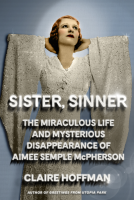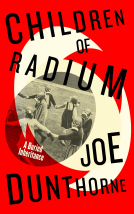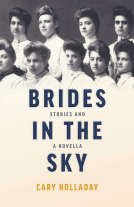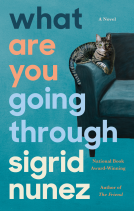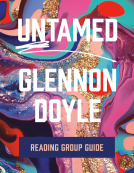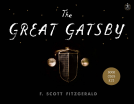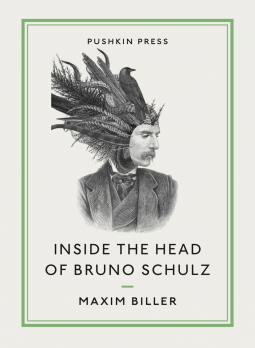
Inside the Head of Bruno Schulz
by Maxim Biller
This title was previously available on NetGalley and is now archived.
Send NetGalley books directly to your Kindle or Kindle app
1
To read on a Kindle or Kindle app, please add kindle@netgalley.com as an approved email address to receive files in your Amazon account. Click here for step-by-step instructions.
2
Also find your Kindle email address within your Amazon account, and enter it here.
Pub Date Oct 13 2015 | Archive Date Aug 17 2015
Pushkin Press | Pushkin Collection
Description
Evoking Bulgakov and Singer, Biller takes us on an astounding, burlesque journey into Schulz's world, which vacillates between shining dreams and unbearable nightmares - a world which, like Schulz's own stories, prophesies the apocalyptic events to come.
Includes two stories by Bruno Schulz: 'Birds' and 'The Cinnamon Shops', from The Street of Crocodiles.
Advance Praise
"One of the most remarkable writers who ever lived" - Isaac Bashevis Singer
"I read Schulz's stories and felt the gush of life." - David Grossman
"One of the most original imaginations in Europe" - Cynthia Ozick
Praise for The Street of Crocodiles:
"A book I've always loved... a masterpiece" - Jonathan Safran Foer
"A rich stew of metaphysical mischief and meditations" - Michel Faber
"Rich in fantasy, sensuous in their apprehension of the living world, elegant in style, witty, underpinned by a mystical but coherent idealistic aesthetic... unique and startling" - J. M Coetzee
'Cold, dark, magnificent' Welt am Sonntag
'Airy, bold, Mozart-like... a brilliant novella' Süddeutsche Zeitung
'The perfect invitation to read Schulz... Biller's small novella is a great Kaddish' Die Zeit
'Biller writes with a matter-of-fact, unobtrusive elegance which is unmatched by any other German writer of his generation. His novella has attained the level of world literature' Spiegel Online
'A linguistic work of art, which shows the stylist Maxim Biller at his creative height' Hamburger Abendblatt
Available Editions
| EDITION | Other Format |
| ISBN | 9781782271000 |
| PRICE | $16.00 (USD) |
Average rating from 18 members
Featured Reviews
 Kathleen D, Reviewer
Kathleen D, Reviewer
I liked it, but I think I remain lost inside Bruno's head as well. Beyond odd, strangely written and yet somehow manages to pull the reader in. Don't be fooled by the length, I found myself re-reading sentences and scratching my head. I loved the writing. "Then he dreamt of Zurich, Paris and New York, where there were hundreds and indeed thousands of ruined, thin-skinned people like him, smiling and waving at one another in cafes, parks and libraries, encouraging each other by means of slight, silent nods." Gorgeous writing! It's funny and strange, sometimes I got the fuzzy feeling I get when I am asleep and dreaming. I was tickled by the terrorizing dilema, should I stay or should I go. His musings about Drohobych and the disgust he feels for the people who 'never think and act as they should'. Who doens't feel that way about their hometowns now and again? His pecking students, the imposter (it has to be an imposter!), is he going to lose his mind? What a fun time I had reading this.
 Educator 211653
Educator 211653
Thank you Net Galley. An interesting book. I enjoyed it immensely., particularly the two stories by Schulz, I had never read him before and hope I get to read more of him.
 Annie S, Librarian
Annie S, Librarian
What would the inside of a writer’s mind look like? I’ve had this thought before, usually about mystery writers. But I’ve seen anyone write the answer to that question until I read Maxim Biller’s brief novella, Inside the Head of Bruno Schulz. Schulz was an actual writer. He was killed by a Nazi outside of the Drohobycz ghetto in 1942. Only a few of his works were published before his death. (One of his stories, “Cinnamon Shops,” is reproduced in this volume.) Schulz’ work shows a strong streak of surrealism and, in the two stories included in this edition of Inside the Head of Bruno Schulz by Puskhin Press, feature characters are obsessed with something to the point of dissociation from what’s happening in the world around them.
It’s fitting, then, that Inside the Head of Bruno Schulz follows the same pattern. Schulz in the novella is writing a letter to Thomas Mann, to let the Nobel winning author know that an imposter-Mann has turned up in Drohobycz. This imposter is gauche, violent, and thoroughly spoiling Mann’s reputation. He’s not well, in any sense. Schulz’ loose grip on reality makes it hard to understand what’s really happening. As Schulz writes, he is occasionally distracted by his sister, birds at his skylight, and the voices of children—which appear to becoming from a pair of birds on the desk.
There isn’t much plot to Inside the Head of Bruno Schulz. What action there is comes from episodes Schulz (as character) puts in his letter to Thomas Mann. Again, it’s hard to know if the things Schulz saw really happened, or happened the way he said they did. I suppose this is fitting for a psychological exploration inside the mind of a surrealist.
I did read the two stories included in this volume, “Birds” and “Cinnamon Shops.” Only after I read these stories did I understand (a little better, anyway) what Biller was up to. In “Birds,” the father of the family keeps exotic birds in the family attic, obsessing over them while missing everything that’s going on around him. Eventually, his daughter retaliates by releasing all the birds. The old man is shattered. Reading this right after Inside the Head of Bruno Schulz, I pictured an author who wants to dream his dreams. The war and the Holocaust made it impossible for Schulz (the character, not the man himself) to either stay in his world or to stay in that world and keep his sanity.
This is a very unsettling collection of stories.
I received a free copy of this ebook from NetGalley, in exchange for an honest review. It will be released 13 October 2015.
Back to German Literature Month, and this time it’s a modern German novella inspired by the life of Bruno Schultz: Inside the Head of Bruno Schultz by Maxim Biller. Bruno Schultz, a polish writer, critic, teacher and illustrator was murdered in 1942 in the Drohobycz Ghetto. He had been commissioned by Nazi officer Felix Landau to paint a mural and in exchange Landau promised protection. Schultz was shot, according to many sources, by another Nazi officer, Karl Günther in revenge for Landau killing Günther’s “personal Jew,” a dentist. So yet again another brilliant talent wiped off the face of the earth by the Nazis. In spite of the fact that very little of his work survived (his final novel The Messiah is lost,) there’s a mythic quality to Bruno Schultz. Just check out the Wikipedia page to see how authors have integrated Schultz into their fiction. Biller’s novella is an imagined glimpse into Schultz’s life.
The book begins with Schultz frantically writing a letter to Thomas Mann:
“My highly esteemed, greatly respected, dear Herr Thomas Mann” wrote a small, thin, serious man slowly and carefully in his notebook, on a surprisingly warm autumn day in November 1938–
The letter, subject to multiple edits, is intended to warn Thomas Mann, currently in Switzerland, about an imposter who’s arrived in Drohobycz. In the letter Schultz admits to Mann that “I cannot say with complete certainty that he is not you, but the stories he tells alone-not to mention his shabby clothes and his strong body odor-arouse my suspicions.” Right away there’s a sense of the absurd, of playfulness, but behind this there’s also a frantic plea and a fearful, neurotic quality to the letter writer. The imposter Thomas Mann is making a spectacle of himself at a local restaurant, seizing food in his hands and stuffing it into his mouth. The imposter Thomas Mann is a sinister demonic character who plans to write a novella in which Jews are murdered by Christians:
“Well my friends, ” said the false stranger to us when he had finished, and was wiping tears of laughter from his eyes, “how do you like this story? How would you reply to the question of guilt that I am about to ask? I would say: if the Hebrews had never come to Drohobycz, that pointless and utterly destructive pogram would never have taken place, would it?” Then he beat a short but vigorous drum roll on the manager’s head with the palms of both hands.
In his letter, Schultz bemoans the fact he must teach “drawing to my beloved but totally untalented boys” at a high school, and it’s at this high school that Schultz is terrorized by a sturdy sports mistress, Helena, “small and athletic and with a hairy face like a clever female bonobo chimpanzee,” who aggressively harasses him about his next novel.
Bruno had really been hoping that no one in school would notice his absence particularly not pretty Helena, whose thick, blonde and often badly combed hair unfortunately gave off the pungent smell of an animal cage, a mixture of urine and damp hay that had been left lying around. Yesterday she had shut him up, for almost a whole hour’s lesson and without any light on, in the little room containing broken gymnastics equipment next to the sports hall. He didn’t know why, but probably because he had trembled even more than usual during their last conversation in a break period, and couldn’t be soothed even by the pressure of her short, but sharp and unfiled fingernails. So what? She shouldn’t have asked him to let her see at least a few pages of his novel, and he had been cold as well, in spite of the summery days that came like a gift in mid-November, and in spite of the fact that he was wearing his heavy jacket. When she finally let him out he was feeling much better, or so he told her at least, for fear of making her even angrier, and she promised to shut him up again sometime soon. Maybe, she added, she’d come into the little room with him herself for a while if he liked. She could go to one of the chaotic shops beyond the market place that opened only late in the evening for a few hours, sometimes not even that, and buy things she’d been wanting to try out with him for a long time he could guess what she meant! No, he had replied, he’d rather she didn’t, although he immediately felt very safe and well at the thought of those things–black leather Venetian Columbine masks stuffed with sawdust; penis-sized Pierrot made of willow rods, and Easter whips interwoven with thin steel chains; silver nipple clamps, and Japanese shunga candles (their dripping wax left no blisters on the skin).
Schultz lives with his sister, Hania, who’s in denial that her husband committed suicide by slitting his own throat ten years earlier. While Schultz writes in the basement, Hania, a Cassandra-like figure, tells him gossip about a man who “looked remarkably” like Bruno visiting a brothel and there he “examined the half-naked girls like a horse dealer, drank a lot of wine, and told dirty jokes.”
Maxim Biller’s Inside the Head of Bruno Schultz, in its blurring of reality and fantasy, mirrors Schultz’s own work, so it’s cleverly executed. Biller’s story itself blends fact with fiction, and it is a bit frustrating not to be able to peel the two apart, yet this dilemma is partially bolstered by Schultz’s life itself; even the story of Schultz’s death is subject to some debate. What of the fictional imposter Schultz who manhandles women at a brothel? Is he real or imagined by Schultz’s sister? Is the imposter Thomas Mann just a figment of the fictional Bruno Schultz’s imagination? We cannot tell the ‘real’ or the imagined apart on so many levels in this novella.
Evidently Schultz did admire Thomas Mann and gave him the manuscript of his novella The Homecoming (1937), a work that is referred to in this story. The Homecoming is lost, and taking that loss into consideration, the letter Schultz writes in the book acquires a much deeper poignancy, and again a mythical quality. While Inside the Head of Bruno Schultz shows Schultz reaching, frantically, desperately, to the outside world represented by Thomas Mann, tragically while Mann did acquire Schultz’s sole work written in German, it is now lost. And that gives a sinister, surreal significance to the whole idea that a Thomas Mann imposter has taken up residence in Drohobycz, popping up a year after Schultz finished The Homecoming. Biller’s novella is set in 1938, and the Germans had yet to arrive in Drohobycz. The “alleged” demonic Thomas Mann appears to be a harbinger of the Nazis:
“You must write your novel. What is it to be called? The Messiah, am I right? To work, get down to work, and when you have finished those bandits will come from Berlin to your little town and burn you along with your wonderful manuscript. Too bad–it’s your own fault!’ He laughed, “terrific, what a subject! But who will write a novel about it where you are dead, Jew Schultz?”
This is another gorgeous little book from Pushkin Press, and it includes two stories from Bruno Schultz: Birds and Cinnamon Shops (translated from Polish by Celina Wieniewska.) Reading these stories and looking at Schultz’s art adds a great deal to Biller’s novella.
The murals Schultz created for Landau were discovered in 2001. Here’s a link for those interested.
Review copy/own a copy.
Translated by Anthea Bell
 Kel M, Media/Journalist
Kel M, Media/Journalist
Friday fiction
And West Is West: A Novel by Ron Childress (2015 PEN/Bellwether Prize)(Algonquin Books, $26.95).
Inside the Head of Bruno Schulz by Maxim Biller, translated by Anthea Bell (Pushkin Press, $16).
Thirteen Ways of Looking: Fiction by Colum McCann (Random House, $26).
Two novels and a collection of short fiction make up this Friday’s fiction-fest, and none of them are what you’d call “brain candy,” but they are gripping and engaging in the way that great writing ought to be.
Technology gets people into moral trouble in And West Is West: A Novel by Ron Childress, the winner of the 2015 PEN/Bellwether Prize for Socially Engaged Fiction.
The social engagement here comes from two characters’ involvement in the “war on terror.” Ethan is a banker—a “quant”—who invented an algorithm to analyze terror attacks and make trades that profit on them. Jessica is an Air Force drone pilot, raining death on people thousands of miles away from a trailer in the Nevada desert.
In both cases, circumstances force them to think about the consequences of what they’re doing, but the system itself is more powerful than the individuals who operate it—and so is the technology. With elements of both a literary novel and a thriller, their stories connect and reveal that technology’s real power is written in dollar signs.
In translation from Pushkin Press (and let it be noted that this small publisher of works in translation is abso-freaking-wonderful), is this short novel by German writer Maxim Biller. The Polish writer Bruno Schulz was murdered by the Gestapo in 1942, but his work has had a long reach, and Biller’s 2013 novella Inside the Head of Bruno Schulz, translated by Anthea Bell, is available in English for the first time, along with two unrelated short stories.
Biller’s somewhat surreal take on Schulz has him writing letters in 1938 to the German author Thomas Mann to warn him about an imposter in the village of Drohobycz, then in Poland. This imposter, Schulz discovers, is a Nazi spy, working to identify Jews for their future destruction.
While there are elements of the surreal, though, the novel itself is firmly tied to reality; the real Schulz’s work is often compared to that of Franz Kafka, and has been cited as an influence by novelists as diverse as Salman Rushdie and J. M. Coetzee, and Biller’s evocation of it was enough to send this critic scrambling for a reading copy of Schulz’s The Street of Crocodiles.
The “thirteen ways of looking” in the title novella of Thirteen Ways of Looking: Fiction by Colum McCann come from a variety of sources, including the elderly man who is the story’s protagonist.
A retired judge, he is mugged one snowy evening; in addition to his own point of view, there are those of security cameras—including one just out of range of the assault—reports both medical and police, and notes on aging. The novella is accompanied by three short stories, as well as a concluding note that puts all of the fiction in perspective as views of the process of writing and of autobiography.
With a title from the famous Wallace Stevens poem, “Thirteen Ways of Looking at a Blackbird”—also about perception and perspective—these fictions offer insight into McCann’s process, as well as just damn good stories.
Readers who liked this book also liked:
Karen Thompson Walker
General Fiction (Adult), Literary Fiction, Sci Fi & Fantasy


